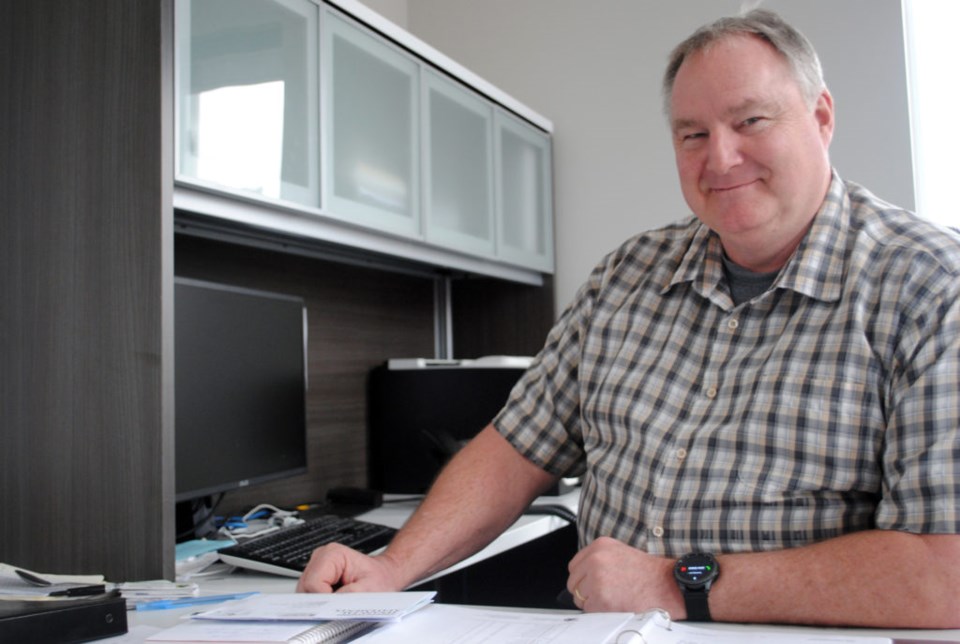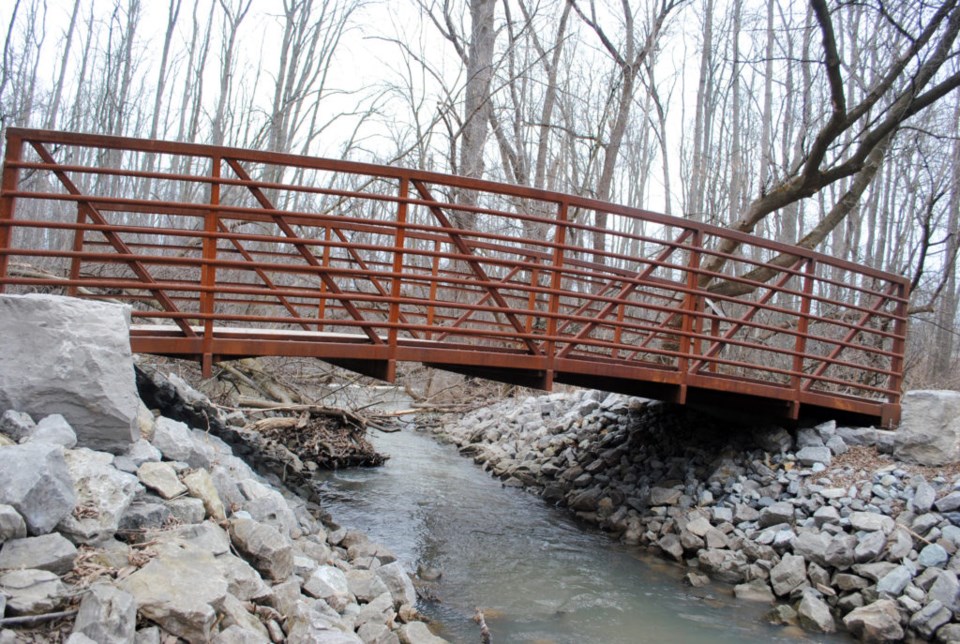
Brett Ruck sees our town the way a medical professional looks at a patient: with a kind of x-ray vision, seeing beneath the surface.
The supervisor of environmental services and superintendent of irrigation and drainage has an almost extra-sensory understanding of the irrigation and drainage systems that run through our agricultural lands and the rest of our fair town.
When someone says, “My passion is irrigation and drainage,” it is possible you might want to edge your way toward the nearest exit. But when Ruck talks about these subjects, they become tangible and meaningful, and even fascinating.
It’s easy to take Ruck’s work for granted, in that, to most of us, it is invisible. And yet without it, we would have no fruit or wine, no showers or baths or even drinking water. Flooding would be rampant.
Niagara-on-the-Lake is unique in so many ways, among them our municipally-run irrigation system, the envy of many. Ruck continues to work to improve what is already among the best, most recently by developing an app to be used by farmers. eRigator is an online tool which allows growers to simply tap on their device when they turn pumps on and off, and automatically populate onerous government forms. It also allows for more accurate reporting to the Ministry of the Environment and Climate Change.
Ruck says 20 per cent of farmers used it in the first year, “Now we’re working on the next generation, the sons and daughters who are taking over the farms in their parents’ footsteps.” He continues, “The app allows us to measure the volume and the source of irrigation; we can also see the curves, the peaks, the demands.” While he started his career before technology was this advanced, the engineer says, “I tend to push the electronic age, for quicker and better data management.”
While irrigation is a passion, the management of phragmites might be Ruck’s mission.
The invasive plant species has taken over ditches and fields in NOTL. Ruck talks about it like an admirable foe. “Phragmites’ root systems are as deep as the plant is tall, so a 15-foot plant also extends 15 feet underground,” he says. “They re-root at every nodule, which is every eight inches. They can grow up into trees — they don’t even need soil,” he says with awe.
He describes individual seed heads containing 20,000 seeds per.
“We find with the phragmites there’s much frustration to deal with; the overgrowth is delaying the delivery of water to farms,” he says. “We’ve got to get the message out.”
Ruck has been fighting this tenacious enemy since he started with the Town in 2015. He’s hopeful there will be some productive movement soon, partly because expert Janice Gilbert will be doing a presentation to council regarding the lessons she has learned about managing phragmites and specialized technology on April 1.
Once again, NOTL finds itself in a unique position, this time because the Ministry of the Environment and Climate Change recommends spraying herbicide on the plants to get rid of them, but in our case “we can’t because we’re in the middle of irrigation and tender fruit farms,” says Rusk. The MECC’s recommendations were attempted on a property outside of the agricultural zone, and they weren’t effective anyway, so Ruck is looking for alternatives.
“We’ve asked about wetblading, in which you coat the blade with a chemical pesticide so that as you cut the phragmites it goes directly into the root system,” he says. “It’s the same chemical farmers use, at a very diluted rate.” The cost and practicalities are being discussed — and the phragmites are growing and spreading. “We need to educate people. Understanding is the key to managing this plant,” says Ruck. “Some private properties are phragmites as far as you can see.”
As warmer weather approaches Ruck says his teams will start cutting and digging where they can, but there are other issues coming into play. One, “Landfill won’t take the phragmites,” explains Ruck, “We probably need to burn them, which comes with another set of regulations.”
“There’s also the issue with excess soil: dirt now has to be tested before being moved, which can take up to two weeks,” he says. “This law is likely to come into effect by mid-April, and is a huge issue. We will likely need to create a transfer site where soil can be dumped and tested before it’s moved,” he explains. “People don’t realize this stuff is coming, the grandeur of that scale — I’ve been following that.”
Ruck is also responsible for handling road and private property flooding, and “I also handle environmental spills — that’s not so fun,” he says.
A little gem in Ruck’s modest crown is the Butler Bridge project, at the top of Butler Street as it leads to Butlers burial ground. “It’s the nicest little walking bridge I’ve ever made,” he says of the charming structure suspended over a now-flowing waterway.
The culverts would flood and make passage dangerous, he says. “People were asking for help. We took the culverts out and let the water flow, made it safer.” They partnered with Parks Canada, and added an educational component with an informative plaque. They also planted native species along the path so there won’t need to be any mowing, and added trout ponds. “You can see trout or salmon there — big, big fish,” he says, holding his hands wide apart.
“I have a bit of a passion for environment and agriculture. I really feel I can make a difference there,” Ruck concludes.
